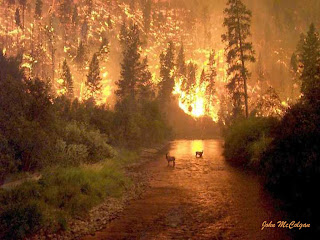High Speed Photography is the science of taking pictures of very fast phenonmena. It's the opposite of time-lapse photography. Common usage, high speed photography may refer to either or both of the following meanings. The first is that the photograph itself may be taken in a way as to appear to freeze the motion, especially to reduce
motion blur. The second is that a series of photographs may be taken at a high sampling frequency or frame rate. The first requires a sensor with good sensitivity and either a very good shuttering system or a very fast strobe light. The second requires some means of capturing successive frames, either with a mechanical device or by moving data off electronic sensors very quickly
Underwater photography is the process of taking photos while underwater. It's usually done while scuba-diving, but can be done while snorkeling or swimming. Despite these challenges, it offers the possibility of many exciting and rare photographic opportunities. Animals such as
fish and marine mamals are the most common subjects, but photographers also pursue shipwrecks, submerged cave systems, underwater "landscapes", and
portrates of fellow divers.


 Candid photography is best described as un-posed and unplanned, immediate and unobtrusive. This is in contrast to classic photography, which includes aspects such as carefully staged portrait photography, landscape photography or object photography. Candid photography catches moments of life from immersion in it.
Candid photography is best described as un-posed and unplanned, immediate and unobtrusive. This is in contrast to classic photography, which includes aspects such as carefully staged portrait photography, landscape photography or object photography. Candid photography catches moments of life from immersion in it.


































 Photo #2 -
Photo #2 - 








